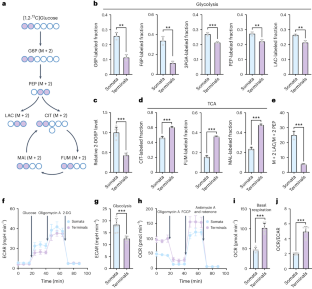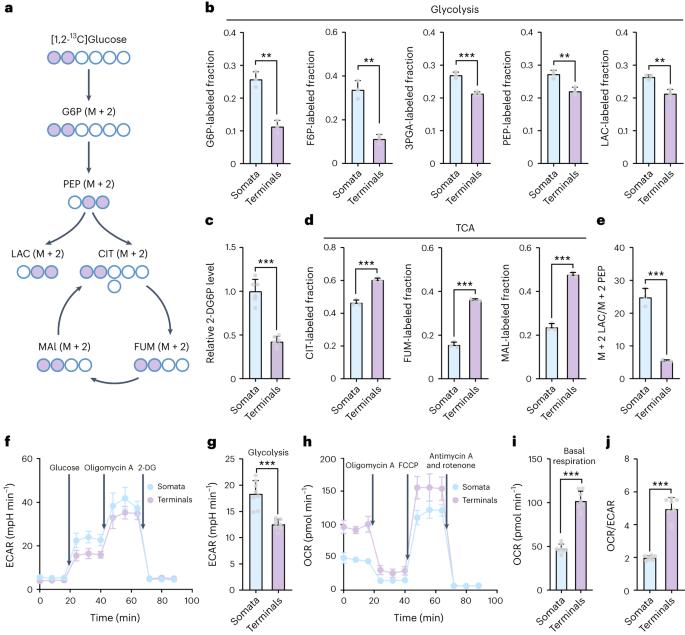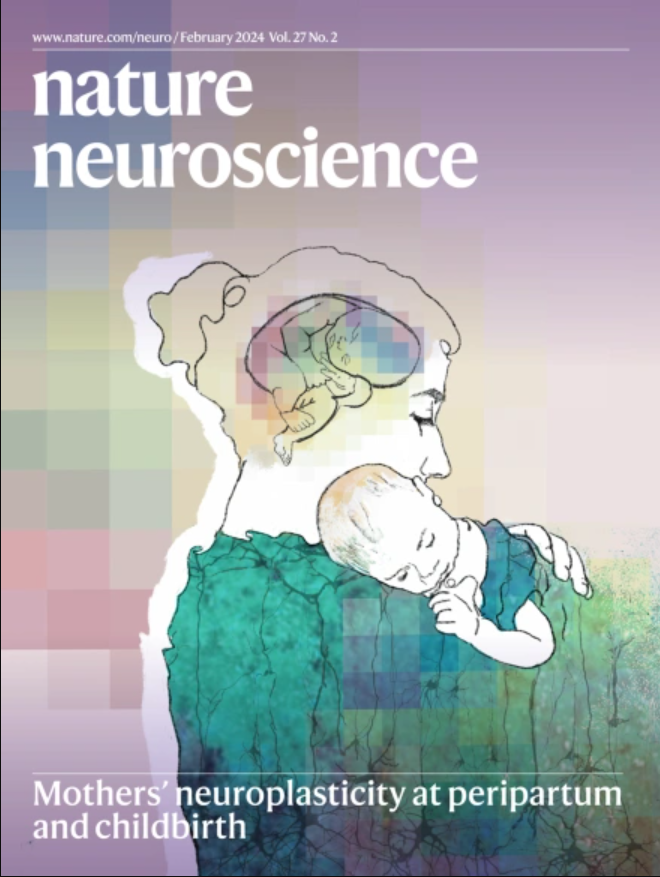Aerobic glycolysis is the predominant means of glucose metabolism in neuronal somata, which protects against oxidative damage
IF 21.2
1区 医学
Q1 NEUROSCIENCES
引用次数: 0
Abstract
It is generally thought that under basal conditions, neurons produce ATP mainly through mitochondrial oxidative phosphorylation (OXPHOS), and glycolytic activity only predominates when neurons are activated and need to meet higher energy demands. However, it remains unknown whether there are differences in glucose metabolism between neuronal somata and axon terminals. Here, we demonstrated that neuronal somata perform higher levels of aerobic glycolysis and lower levels of OXPHOS than terminals, both during basal and activated states. We found that the glycolytic enzyme pyruvate kinase 2 (PKM2) is localized predominantly in the somata rather than in the terminals. Deletion of Pkm2 in mice results in a switch from aerobic glycolysis to OXPHOS in neuronal somata, leading to oxidative damage and progressive loss of dopaminergic neurons. Our findings update the conventional view that neurons uniformly use OXPHOS under basal conditions and highlight the important role of somatic aerobic glycolysis in maintaining antioxidant capacity. Neuronal somata perform higher levels of aerobic glycolysis and lower levels of OXPHOS than terminals, which safeguards against oxidative damage.


有氧糖酵解是神经元体内葡萄糖代谢的主要方式,可防止氧化损伤。
一般认为,在基础条件下,神经元主要通过线粒体氧化磷酸化(OXPHOS)产生ATP,糖酵解活性仅在神经元被激活并需要满足更高能量需求时占主导地位。然而,在神经元体细胞和轴突终末之间葡萄糖代谢是否存在差异尚不清楚。在这里,我们证明了在基础状态和激活状态下,神经元体比终末进行更高水平的有氧糖酵解和更低水平的OXPHOS。我们发现糖酵解酶丙酮酸激酶2 (PKM2)主要位于体细胞而不是末端。小鼠中Pkm2的缺失导致神经元体细胞从有氧糖酵解转变为OXPHOS,导致氧化损伤和多巴胺能神经元的进行性丧失。我们的发现更新了传统的观点,即神经元在基础条件下统一使用OXPHOS,并强调了体细胞有氧糖酵解在维持抗氧化能力中的重要作用。
本文章由计算机程序翻译,如有差异,请以英文原文为准。
求助全文
约1分钟内获得全文
求助全文
来源期刊

Nature neuroscience
医学-神经科学
CiteScore
38.60
自引率
1.20%
发文量
212
审稿时长
1 months
期刊介绍:
Nature Neuroscience, a multidisciplinary journal, publishes papers of the utmost quality and significance across all realms of neuroscience. The editors welcome contributions spanning molecular, cellular, systems, and cognitive neuroscience, along with psychophysics, computational modeling, and nervous system disorders. While no area is off-limits, studies offering fundamental insights into nervous system function receive priority.
The journal offers high visibility to both readers and authors, fostering interdisciplinary communication and accessibility to a broad audience. It maintains high standards of copy editing and production, rigorous peer review, rapid publication, and operates independently from academic societies and other vested interests.
In addition to primary research, Nature Neuroscience features news and views, reviews, editorials, commentaries, perspectives, book reviews, and correspondence, aiming to serve as the voice of the global neuroscience community.
 求助内容:
求助内容: 应助结果提醒方式:
应助结果提醒方式:


